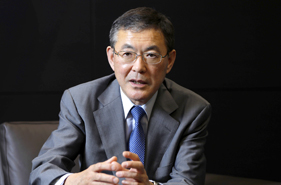Subaru Considers Electric Powertrains For Lineup
![]() Print this Article | Send to Colleague
Print this Article | Send to Colleague
 Subaru Corp. is considering electric versions of its existing models for the carmaker’s first foray into the technology, as it joins peers around the world in pouring cash into battery-powered vehicles amid tightening emissions rules.
Subaru Corp. is considering electric versions of its existing models for the carmaker’s first foray into the technology, as it joins peers around the world in pouring cash into battery-powered vehicles amid tightening emissions rules.The Japanese company, which plans to make record investments in research and development in this financial year, is weighing installing electric powertrains in current models rather than designing an all-new car, Chief Executive Officer Yasuyuki Yoshinaga, 63, said in an interview on May 19. The move would allow Subaru to capitalize on its reputation for safety while eliminating the need to partner with another automaker, he said.
Building a car designed from Day One for electric power is the preferred approach, but developing completely new models takes about five years.
"If there’s already an attractive Subaru model, for example, the XV crossover, and if a customer in Beijing wants one but is only allowed to buy an electric vehicle, if there’s no electric version then he can’t buy it," Yoshinaga said. "Providing the choice of an EV means the customer can still desire the same Subaru."
Subaru will invest $1.2 billion in research and development during the next 12 months, most of it aimed at getting a plug-in hybrid version of one of more of its cars into production by the end of 2018. Suppliers like GKN are already building complete EV powertrain components to speed the adoption of electric vehicle technology in the global marketplace and eliminate the need for each manufacturer to design, test, and build its own hardware.
Yoshinaga also said his company expects to have a battery electric car to sell to customers by the beginning of the next decade. He did not indicate whether the BEV Subaru would be an entirely new model or based on an existing car in the company’s lineup.

